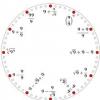
gwenael
Members-
Posts
334 -
Joined
-
Last visited
-
Days Won
3
gwenael last won the day on June 4 2014
gwenael had the most liked content!
Profile Information
-
Gender
Male
gwenael's Achievements
-
 Phuein reacted to a post in a topic:
Babylon Coordinate Unit
Phuein reacted to a post in a topic:
Babylon Coordinate Unit
-
 JackFalcon reacted to a post in a topic:
How to get height and width of a mesh?
JackFalcon reacted to a post in a topic:
How to get height and width of a mesh?
-
 coolroar reacted to a post in a topic:
Spaces (world, parent, pivot, local)
coolroar reacted to a post in a topic:
Spaces (world, parent, pivot, local)
-
 webGLmmk reacted to a post in a topic:
Spaces (world, parent, pivot, local)
webGLmmk reacted to a post in a topic:
Spaces (world, parent, pivot, local)
-
 adam reacted to a post in a topic:
User Data in mesh object?
adam reacted to a post in a topic:
User Data in mesh object?
-
 c75 reacted to a post in a topic:
how to set mesh's center and how to setPhysicsState at heightmap
c75 reacted to a post in a topic:
how to set mesh's center and how to setPhysicsState at heightmap
-
 riorben reacted to a post in a topic:
Babylon Coordinate Unit
riorben reacted to a post in a topic:
Babylon Coordinate Unit
-
 tooobvious reacted to a post in a topic:
Spaces (world, parent, pivot, local)
tooobvious reacted to a post in a topic:
Spaces (world, parent, pivot, local)
-
 Ni fait ni à faire reacted to a post in a topic:
[Bug ?] BuildOurOwnBabylonJS.bat invalid output on my platform
Ni fait ni à faire reacted to a post in a topic:
[Bug ?] BuildOurOwnBabylonJS.bat invalid output on my platform
-
Glad you found a solution. Still, it may be broken on Windows too. I'll check that.
- 7 replies
-
- minified version
- bug report
-
(and 1 more)
Tagged with:
-
Hi guys, @davrous, thanks for your link. @davrous or others: - Do application/babylon and application/babylonmeshdata are deposed as mime types? (http://www.iana.org/assignments/media-types/media-types.xhtml) - If I use application/json instead (to declare .babylon files and .babylonmeshdata), will IIS gzip the files without I have to do so? Like I think it does for css, javascript... Thanks
-
 gwenael reacted to a post in a topic:
Babylon.js v2.0 tee-shirt
gwenael reacted to a post in a topic:
Babylon.js v2.0 tee-shirt
-
 gwenael reacted to a post in a topic:
Upcoming what's new for v2.0
gwenael reacted to a post in a topic:
Upcoming what's new for v2.0
-
 gwenael reacted to a post in a topic:
Upcoming what's new for v2.0
gwenael reacted to a post in a topic:
Upcoming what's new for v2.0
-
 gwenael reacted to a post in a topic:
Water Transparency
gwenael reacted to a post in a topic:
Water Transparency
-
 gwenael reacted to a post in a topic:
Use Layer class and LayerMask property
gwenael reacted to a post in a topic:
Use Layer class and LayerMask property
-
Hi hit2501, Which server do you use?
-
 gwenael reacted to a post in a topic:
Bézier curves
gwenael reacted to a post in a topic:
Bézier curves
-
 RaananW reacted to a post in a topic:
Babylon Coordinate Unit
RaananW reacted to a post in a topic:
Babylon Coordinate Unit
-
 gwenael reacted to a post in a topic:
Recommended way to get Visual Studio intellisense for v1.12 while developing?
gwenael reacted to a post in a topic:
Recommended way to get Visual Studio intellisense for v1.12 while developing?
-
 gwenael reacted to a post in a topic:
Mesh.setVerticesData 1.12 signature
gwenael reacted to a post in a topic:
Mesh.setVerticesData 1.12 signature
-
 gwenael reacted to a post in a topic:
Babylonjs behavior / Javascript behavior
gwenael reacted to a post in a topic:
Babylonjs behavior / Javascript behavior
-
 gwenael reacted to a post in a topic:
Babylonjs behavior / Javascript behavior
gwenael reacted to a post in a topic:
Babylonjs behavior / Javascript behavior
-
For physics engine you may want to be careful with gravity value since it must be coherent with your unit. 9.81 is correct if your unit is meter otherwise you have to convert 9.81 to the right value. If 1 unit = 1 cm then gravity should be set to 981.
-
Hi binyan, Sorry I've been off the forum for a while. I'm trying to catch up but it can take me some times. Did you figure out how to do what you wanted? Sorry I was not totally clear. First, this may help you: http://www.html5gamedevs.com/topic/3083-spaces-world-parent-pivot-local/?p=19938 All points (vertices) of a mesh have positions relative to mesh center. For example, for a mesh which is a cube, one of its point may be at (1,1,1) if the mesh center is the center of the cube (intersection of its diagonales) and another point would be at (-1,-1,-1). The side of the cube would be 2 units. The positions of the points of the mesh are relative to the center position of the mesh. If the center of the cube is positioned at the center of the world (0,0,0) then the first point (I mentioned before) of the cube is positioned at (1,1,1) BUT if the center of the cube is positioned at (5,5,5) in the world then the first point is positioned at (6,6,6) in the world but still at (1,1,1) relatively to the center of its mesh. (5,5,5) is expressed in World space whereas (1,1,1) is expressed in Local space (relative to mesh center). mesh.position, mesh.rotation and mesh.scaling set the pivot of the mesh relatively to the center of the parent mesh (or center of the world if the mesh doesn't have a parent). The mesh rotates relatively to its pivot. pivot matrix sets the center of the mesh relatively to the pivot of the mesh A point (1,1,1) expressed in local space has a position in parent space by combining the matrix given by mesh.position, mesh.rotation and mesh.scaling and the pivot matrix. Like for is position expressed in world space, its position expressed in parent space may be different than its position expressed in local space BUT on your screen it's still at the same place. It's something similar to: you are sitten between two people, you are at the right of the first one (your position expressed in his/her space) and the left of the second one (your position expressed in his/her space) but still you didn't move By doing mesh.position.z = -0.5 you set the position of its pivot at z = -0.5 relatively to its parent (the world here) same thing with mesh.position.x = 0 but if you don't specify a pivot matrix then by default the center of the mesh is on the pivot (on your screen your mesh has moved) If you specify a pivot matrix then you set the center of your mesh relatively to its pivot and now you can rotate around the axis of the pivot space instead of those of the local space http://www.babylonjs-playground.com/#1LVVGB
-
Java utility to build debug version of Babylon.js
gwenael replied to JCPalmer's topic in Questions & Answers
If I have understood you well, you can achieve the same result with the minified version in Chrome Javascript console by selecting your file in the Sources tab and by clicking on the following icon '{}'. Thus you can work with the minified version and you can still debug it easily -
I think there is no function to do that for now but I may be able to add it. For now, here's the trick: if your mesh doesn't have a parent you can position its pivot thanks to mesh.position.z = -0.5; mesh.position.x = 0; and then set the pivot matrix to reposition your mesh where it was initially. Your pivot matrix should be the identity with m[11] and m[13] with the right values With this set, you can now do mesh.rotation.y = whatever you want
-
Sorry, I don't understand your question. If you are on Windows, you may want to have a look at https://github.com/BabylonJS/Babylon.js/tree/master/Tools/BuildOurOwnBabylonJS
-
Hello, You must use a local webserver to serve the files.
-
Scale and rotation are in the 3*3 matrix, position must be stored in the 4th line (for row-major order matrix such in babylon.js) or in the 4th column (for column-major order matrix). More about row-major and column-major order: http://en.wikipedia.org/wiki/Row-major_order
-
Babylon.js, Blender and Instancing Possibilities
gwenael replied to gryff's topic in Questions & Answers
It could be nice to have something parametrable: pretty much everything is cloned by default but you can use flags to clone only what you want. -
Babylon.js, Blender and Instancing Possibilities
gwenael replied to gryff's topic in Questions & Answers
and here comes the question: up to where an instance should be a perfect copy of a mesh? Do they share all properties (or the properties at least are synced) (physices, geometry...) except transform or some of them could/must be overriden? -
Welcome on board SolidCatuar. The following link could be helpful: http://www.html5gamedevs.com/topic/3083-spaces-world-parent-pivot-local/?p=19938 especially the "Things to remember" section. It doesn't explain everything so I'll try to give you more information if after reading this you still need it.
-
Pick on CreateGround and CreateGroundFromHeightMap
gwenael replied to Dad72's topic in Questions & Answers
In French: Je dis juste ça pour partager ma petite expérience en déboggage de code parce que je sais que c'est quelque chose qui m'a beaucoup aidé à devenir un meilleur développeur. I think the idea is to share experience so we can learn from each other. It was a tip dad72, don't be offended. This tip was for you and for anyone else.



